Key takeaways:
- Selective mutism is an anxiety disorder characterized by a child’s inability to speak in specific social situations despite being capable in quieter settings.
- Recognizing symptoms involves observing contrasting behaviors in different environments and managing physical manifestations of anxiety, often mistaken for shyness.
- Creating awareness around anxiety leads to understanding, empathy, and proactive interventions, fostering safe spaces for discussion and support.
- Personal coping techniques such as journaling, mindfulness, and physical activity, along with building a support network, are essential for managing anxiety effectively.
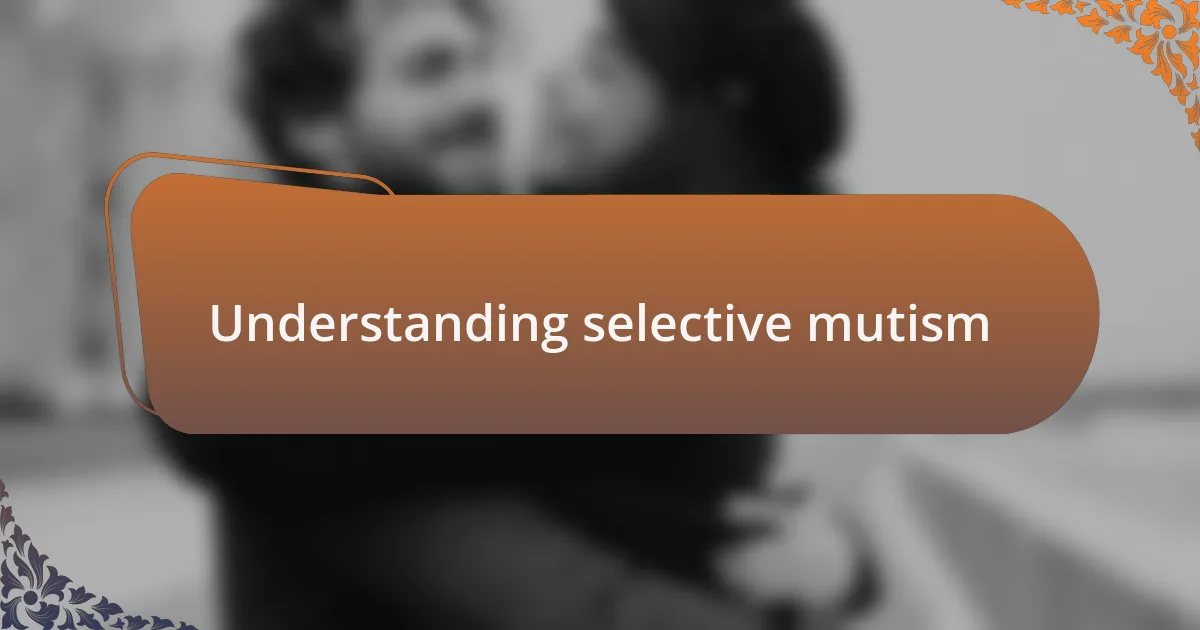
Understanding selective mutism
Selective mutism is a complex anxiety disorder that often manifests in early childhood, where a child is unable to speak in certain social situations, despite being capable of speech in quieter environments. I remember the first time I saw a child struggle with this; it was heartbreaking. They had so much to say, yet their voice felt trapped—can you imagine the frustration that comes with that?
Understanding selective mutism means recognizing it’s not just shyness or an unwillingness to speak; it’s tied to a deep fear that can feel overwhelming. I often found myself reflecting on my own experiences with anxiety and how it can silence even the loudest voices. Isn’t it fascinating how an internal struggle can create such barriers in social interactions?
As the child grows, selective mutism can be coupled with feelings of isolation and misunderstanding from peers and adults alike. I recall times when I saw friends feeling alienated because they couldn’t express themselves in a world that often demands instant communication. How does one navigate those feelings of being trapped in silence? It’s a journey that some find incredibly challenging, but understanding is the first step.

Recognizing symptoms of selective mutism
Recognizing the symptoms of selective mutism involves paying close attention to a child’s behavior in different environments. For instance, I once observed a child who effortlessly chatted during a family gathering but turned completely mute when it came time to interact with classmates. It’s this stark contrast that can be a key indicator; the inability to communicate in certain social settings, even if they are capable of doing so in others, highlights the struggle beneath the surface.
Another symptom to note is the child’s physical manifestations of anxiety when faced with speaking situations. I remember witnessing a child become visibly anxious, fidgeting or avoiding eye contact when asked to speak in class. Such signs are often mistaken for mere shyness, but they align more closely with anxiety’s grip, which can feel suffocating to the child. Have you ever felt your heart race just contemplating a daunting social scenario?
Additionally, selective mutism can affect a child’s social interactions. I think back to a school event where one child sat quietly apart from their peers, eager to join yet unable to bridge the gap. It’s heart-wrenching to see, and it’s crucial for adults to recognize that these signs reflect a deeper emotional experience rather than simple reluctance to engage. Understanding these symptoms is essential in providing the right support.
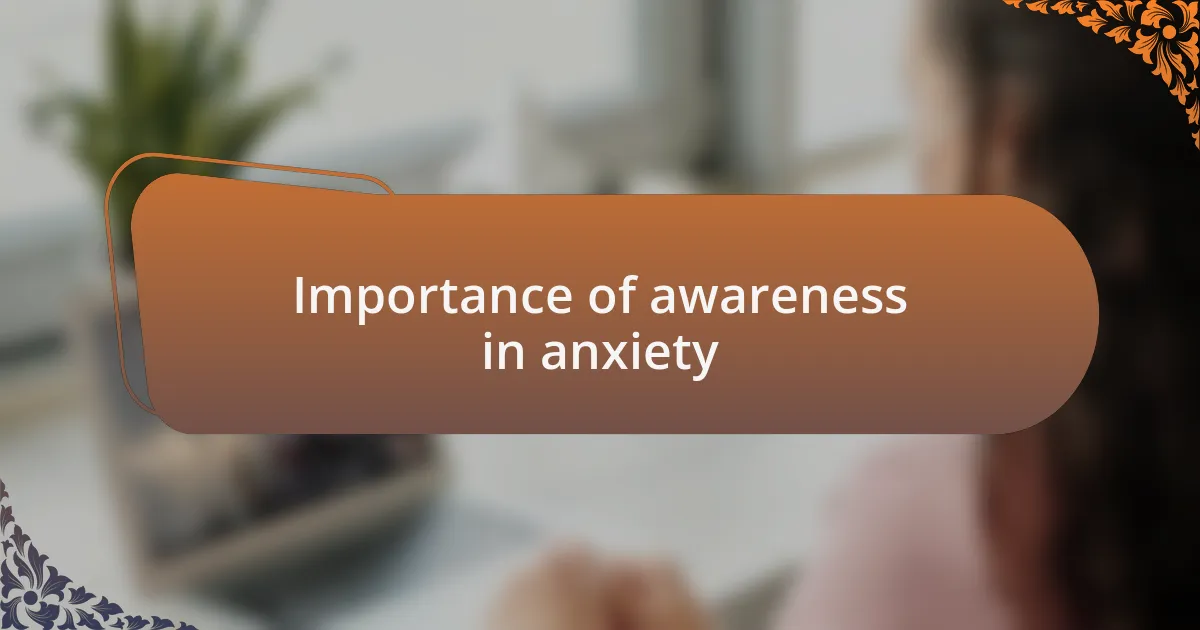
Importance of awareness in anxiety
Awareness of anxiety is crucial because it builds a foundation for understanding and empathy. I remember a moment when a close friend shared her struggles with anxiety openly for the first time. It was such a relief for her to feel heard and understood, transforming our friendship. Have you ever noticed how sharing our experiences can lighten the emotional burden?
When we create awareness around anxiety, we equip ourselves and others with the tools to recognize its manifestations. One day, while volunteering at a local support group, I encountered an individual who thought their racing heart during social events was a sign of weakness. After explaining that such symptoms are common markers of anxiety, I could see a sense of validation wash over them. It’s remarkable how awareness can shift perspectives, empowering people to seek help.
Increasing awareness also fosters conversations that can lead to proactive interventions. I recall hosting a workshop on anxiety where parents learned to identify subtle signs in their children. The shift in their understanding was palpable. By normalizing discussions around anxiety, we can create safe spaces for everyone to share their experiences without fear. How can we not support one another in this journey?
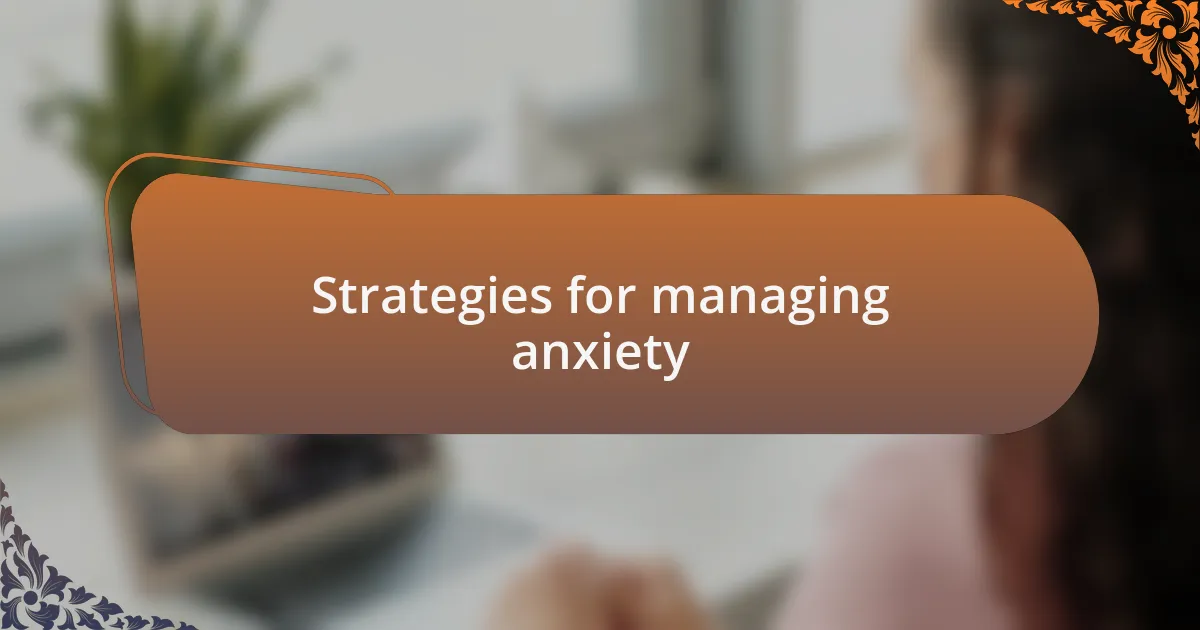
Strategies for managing anxiety
One effective strategy I’ve found for managing anxiety is establishing a routine. When I stick to a consistent daily schedule, it creates a sense of control and predictability in my life. Have you ever experienced the comfort of knowing exactly what’s next on your agenda? This simple practice can diminish those overwhelming feelings, allowing me to focus on one task at a time.
Another approach I often use is deep breathing exercises. I remember a particularly tense day at work when my mind felt like a whirlwind. Taking just a few minutes to practice deep breaths helped to ground me, calming my racing thoughts and restoring a sense of clarity. Wouldn’t it be great if everyone knew how such a small change could lead to a big impact?
Lastly, I’ve discovered that connecting with others who understand can be incredibly powerful. Sharing my feelings in safe spaces with supportive friends fosters a sense of belonging and reduces isolation. Have you ever felt the weight lift after talking to someone who gets it? These connections not only provide emotional support but also remind me that I’m not alone in my journey with anxiety.
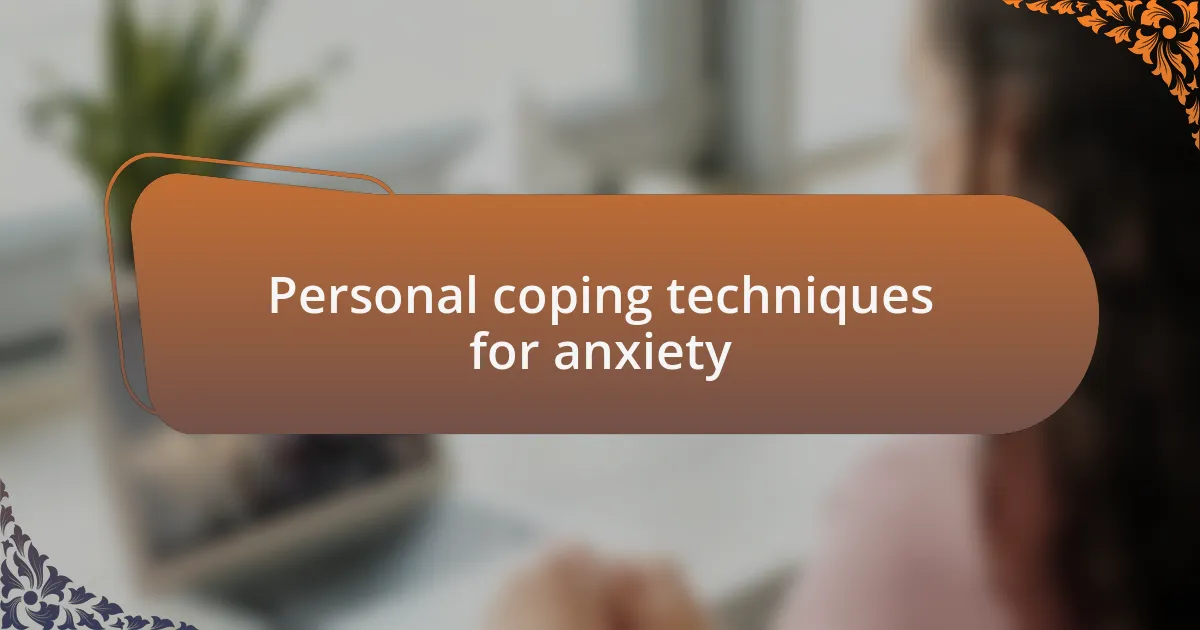
Personal coping techniques for anxiety
One technique that has worked wonders for me in managing anxiety is journaling. When the thoughts swirl in my head like a storm, putting pen to paper helps me untangle those emotions. I often ask myself, what’s really bothering me? This practice not only clarifies my feelings but also allows me to track patterns in my anxiety, making it feel less daunting over time.
I also find solace in mindfulness meditation. I remember a particularly overwhelming moment when I sat quietly and focused on my breath. Despite the chaos around me, this practice anchored me. It’s incredible how just a few minutes can shift my perspective, promoting a sense of peace. Have you ever noticed how being present in the moment can lighten the emotional load you carry?
Lastly, I’ve embraced the power of physical activity. On days when anxiety feels heavy, a brisk walk or a quick workout helps to release pent-up energy. I can’t help but smile when I think about how just moving my body brings a flood of endorphins, lifting my spirits. Isn’t it fascinating that something as simple as exercise could be such a remarkable tool for coping with anxiety?

Building a support network
Building a support network can feel like a lifeline when anxiety strikes. I remember feeling isolated during my toughest days, convinced no one understood what I was going through. It wasn’t until I reached out to friends and family, sharing my struggles, that I discovered how many people were willing to stand by me and listen. Have you ever realized how simply talking about your experiences can break down those walls of solitude?
Finding the right people made all the difference for me. I started joining local support groups where others shared their journeys with anxiety and selective mutism. It was refreshing to hear similar stories, and I felt a sense of belonging that I hadn’t experienced in a long time. Connecting with others who really get it can be empowering, don’t you think?
I also learned the importance of having a few trusted individuals I could turn to in moments of panic. Whether it was a friend who offered a reassuring presence during a difficult social situation or a therapist who provided professional guidance, these connections were crucial. Sometimes, the mere presence of someone who understands can bring comfort and reassurance. Have you found that special person or group that stands by you in your struggles?
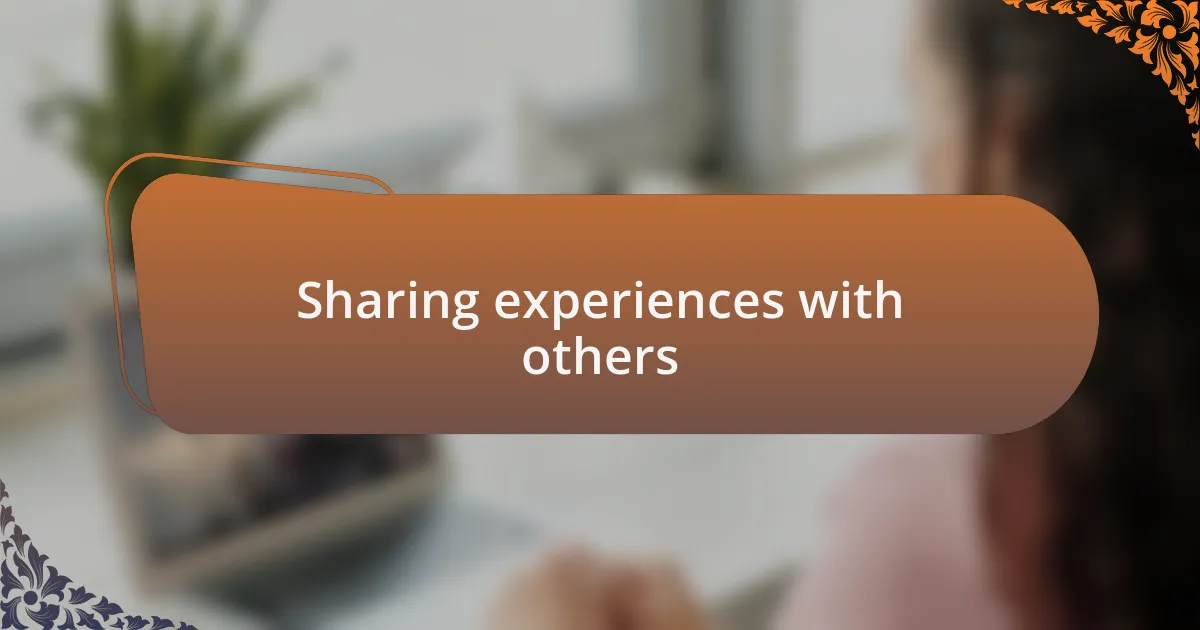
Sharing experiences with others
Sharing experiences with others can be a powerful way to tackle anxiety. I remember the first time I opened up in a group setting; it felt like shedding a heavy coat I had been wearing alone for far too long. When I shared my own story, I noticed the nods around the room, a silent acknowledgment that I wasn’t as alone as I had thought.
In one memorable session, a fellow participant shared her experience of dealing with selective mutism during childhood. Hearing about her journey made me realize how our struggles can intertwine. Isn’t it fascinating how one person’s openness can encourage others to speak up, creating a ripple effect of empathy and support?
I’ve often found solace in those moments of shared vulnerability. When someone shares a relatable challenge, I feel a wave of relief, as if the burden of my anxiety is lifted, even if just for a moment. Have you ever experienced that kind of release in a conversation? It’s comforting to know that we can learn not only from each other’s experiences but also from the strength we gain when we unite in our struggles.